Architecturally spectacular Wicona façades at the Orona Ideo eco-efficient complex in Basque Country
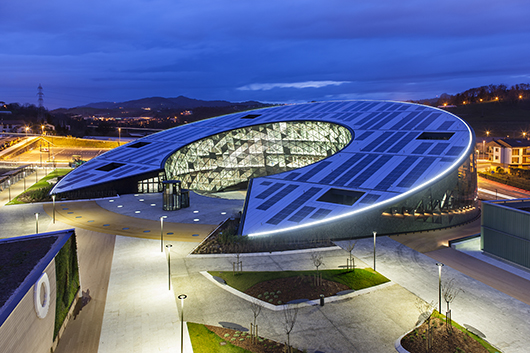
The German brand Wicona developed the façade of the cylindrical, architecturally spectacular and energy efficient Zero building, helping it gain Leed Oro and Breeam Excellent certification.
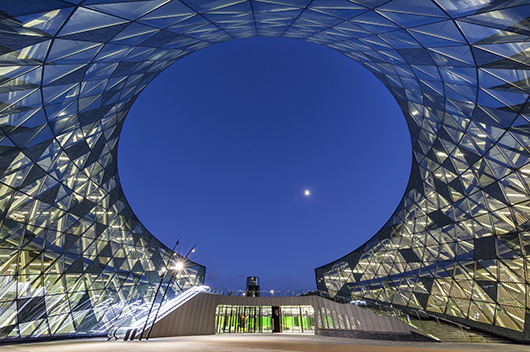
The Orona Ideo complex, the headquarters of the leading elevator and escalator brand in Spain, is located in Hernani (Gipuzkoa, Basque Country) and consists of four separate buildings: Gallery, A3 Research, Fundazioa and Zero. The most spectacular is this last building, which houses the brand's corporate services department and part of its R&D department. Its façade, made with Wicona façade systems, consists of more than 2000 triangular ‘pixels’ that are either opaque, translucent or transparent depending on their position, their exposure to the sun's rays or the use of the interior spaces. The building consists of a 16-meter-high cylinder with a 90-metre external diameter and a southward inclination of 15º, a symbolic evocation of the Orona logo. This inclination has made it possible to optimise the bioclimatic design, turning the roof into a huge solar panel that is completely integrated within the design. Part of the building is raised off the ground, giving access to the Galarreta Technology Park, and also representing the idea of the ‘gateway’ into the park. This access is by means of a central patio with a diameter of 45 meters, in which the entrance to the building is also located.
As regards the internal layout, as well as the entranceway, the ground and mezzanine floors house shared services such as the administration department, showroom, auditorium, laboratory, etc., and the upper floors contain the offices and work and research areas.
Transit within the building follows the curve of the central patio. The work areas are laid out on the opposite façade and are both diaphanous and flexible, adaptable to users’ different needs over time. Between the transit areas and the work areas the building has a services cluster containing the stairwells and lifts, bathrooms and offices.
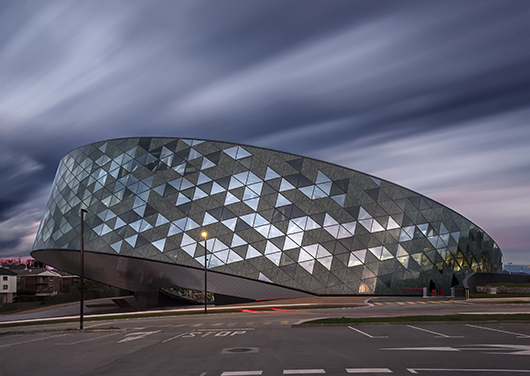
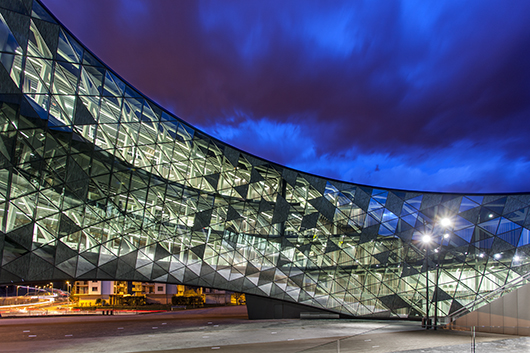
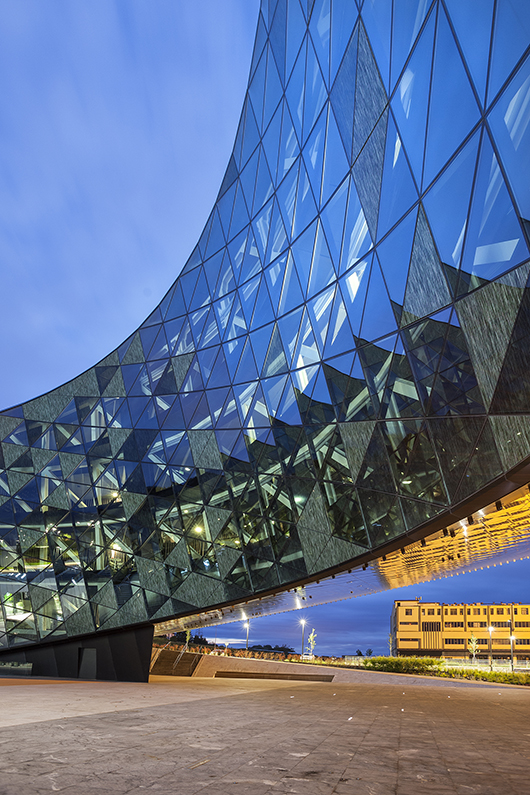
A FAÇADE MADE WITH CUSTOMISED WICONA SYSTEMS
The Zero building, with a total floor area of 11,500 m2 distributed over six storeys above ground level, has a mixed concrete and steel structure. The interior mainly features technological materials such as aluminium and glass with wood counterpoints that add warmth.
Given the building's design limitations, it was not possible to produce a geometrically efficient floor-toceiling construction solution, and the final solution chosen was a curtain wall that covered the entire building with a single skin created to the highest specifications. To create this solution, the system chosen was the Wicona's WICTEC 50 SG curtain wall.
The difficulty in designing the façade lay in the fact that the building has a polygonal floor plan while the walls and roof form a triangle. It was therefore considered advisable to create a system that would simplify the joints between the edges by concentrating them in a single point.
How was the façade designed? Wicona made modifications to its WICTEC 50 SG system, the traditional rectangular design replaced by a trapezoidal frame with 15º internal and external angles. This meant that the mechanical elements of the crossbars were all on a single plane, thus facilitating the manufacturing and assembly process and guaranteeing the proper functioning of the façade despite the technical complexity of its structure.
Regarding the resulting curtain wall solution, Iñigo Marquet, Communications Director at Orona, highlights “its technological reliability, versatility to adapt geometrically to our requirements, the clean lines of a glassclad façade, good maintenance and the elegance of the resulting façade”.
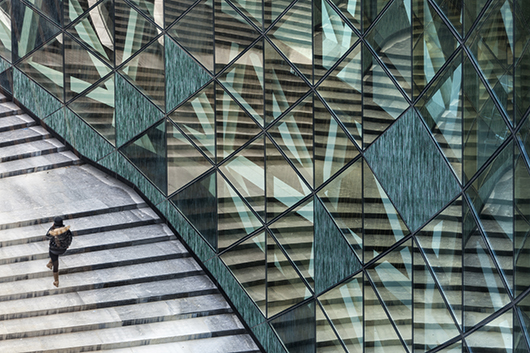
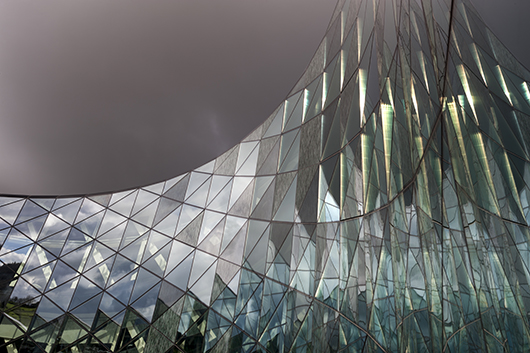

A single system for joining the curtain wall structure
As well as the modification to the frames of Wicona's WICTEC 50 SG system, a customised connection was created to join the different edges of the triangles. It also allowed rapid installation of the façade and a high-quality interior finish in terms of both appearance and performance. In those places where natural ventilation points were required, triangular windows were created, modifying the Wicona WICTEC 50 window system, adapting it to the triangular shape and adding a highly discreet motorised opening system.
The glass panes were intercalated with sheets of perforated film that filter light and other transparent materials, providing solar control and low thermal emissivity. In some places, the glass has been replaced by blind panels that make it possible to divide up the interior and personalise the different spaces.
The choice of this Wicona façade system - which has the Environmental Product Declarations (EPDs) needed to obtain the most highly valued energy quality certifications - and the overall project design adhere to Orona's commitment to Corporate Social Responsibility. This commitment, as explained by Marquet, “has allowed the Orona Zero building to achieve both Leed Oro and Breeam Excellent certification. The evaluation parameters used were very complete, from the use of materials to the building's energy performance, in which the curtain wall has played a highly important role. The fact that the building is covered completely in a curtain wall means that the U-value is poorer compared to a more massive, opaque solution, but at the same time it favours the entry of daylight, as well as improving the views and the architectural quality of the building in general. By performing a highly detailed study of the wall and its glass panes, and by insulating the inside of the opaque triangles, it was possible to attain an optimal global solution”.


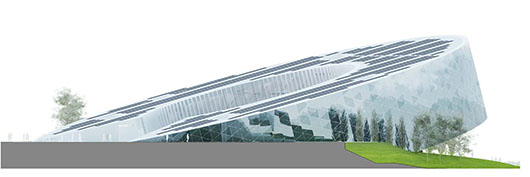

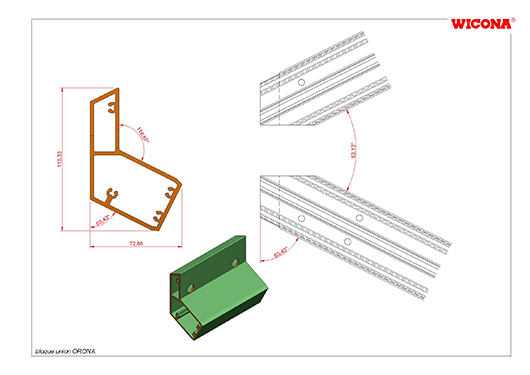
The joint connector, custom designed by Wicona
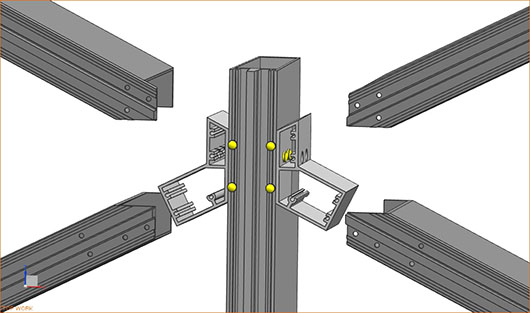
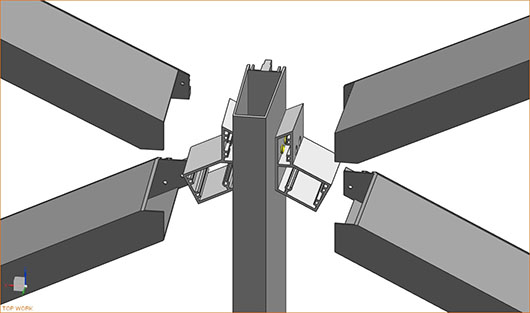
Project: Zero building of the Orona Ideo complex
Location: Hernani, Spain
Architects: X.Barrutieta - E.Goikoetxea - J. delaFuente - S.Pérez
Project Management: LKS Ingeniería
Façade developer: Uxama.
Wicona solutions used: WICTEC 50 SG façade, with customised modification of the frames and
WICTEC 50 roof windows.
Photographs: Agustín Sagasti
Source: Wicona
Visit the Wicona website
News Infurma:
Online Magazine of the International Habitat Portal. Design, Contract, Interior Design, Furniture, Lighting and Decoration
